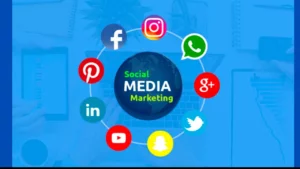What is copywriting?
Copywriting is one of the most critical elements of any and all forms of marketing and advertising. Copywriting consists of the words, either written or spoken, marketers use to try to get people to take an action after reading or hearing them.

It is like a call-to-action, but on a bigger scale: Copywriters are trying to get people to feel, think, or respond — or, ideally, to Google the slogan or brand to learn more about the campaign. And where a blog post like this one has the luxury of hundreds of words with which to make a case, copywriters only have a few words to make their case. Want to explore more about Copywriting and its traits, Read this article full with Pritish Kumar.
6 Traits of Good Copywriting
1) It tilts your perspective.
Sometimes, all a message needs to break through is a slight shift in angle. We’ve grown so accustomed to blocking out marketing messages, we don’t even see them anymore. One of the most powerful things a copywriter can do is break down a reader’s guard with an unexpected approach. Every story has a myriad of angles — your job as a copywriter is to find the one that resonates.
2) It finds connections.
Let’s say you have to write an ad for a new pair of sneakers. You could take the assignment head on. You could write about the elasticity of the shoe’s sole or the lightweight design. Indeed, many have. Or you could put all of that aside and instead draw the connection between the product and the experience it evokes.

Two things are happening in this ad. First, the copy recognizes that for many, running isn’t about running at all — it’s about solitude, peace, and restoring sanity to an otherwise hectic life. Second, not only does Nike connect the ad to the experience of running, it actually connects to the sound that those shoes make as they hit the pavement.
3) It has a stunning lead.
The following are all headlines or leading sentences from Urban Daddy, an email-based magazine drawing attention to new products, experiences, and eateries.
- “Six days. That’s how long you have until 65% of your body is turkey.”
- “There are 8,760 hours in a year. And just one hour in which a stand will be dispensing gratis latkes with homemade applesauce and sour cream in Harvard Square. Yeah, it’s not fair. But 60 minutes is 60 minutes.”
- “Ewoks. Talk about living.”
There’s an adage in copywriting that’s loosely credited to copywriter and business owner Joe Sugarman, which roughly states that the purpose of the headline is to get you to read the first line. The purpose of the first line is to get you to read the second line, and so on. In short, if your first line doesn’t enthrall your readers, all is lost.
4) It is born out of listening.
Seeing its plans to launch yet another gym in the greater Boston region, an outsider might have called the Harrington family a wee bit crazy. The market was already flush with gyms, including a new breed of luxury ones that seemed to be in an arms war for the flashiest perks. Gyms across the region were offering massage services, smoothie bars, and fleets of personal trainers. And Gym It wouldn’t have any of that.

What did Gym It have?
An understanding of its core audience. Before launching its new gym, the brand did a ton of listening to its primary market of gym-goers. For many in Gym It’s target market, the added benefits associated with luxury gyms were nice to have, but came with a lot of baggage — namely expensive rates and overly complex contracts.

In an older blog post, copy blogger’s Robert Bruce put this nicely. “Humble yourself and truly serve your audience, listen to their needs and desires, listen to the language they use,” he said. “If you listen carefully, your audience can eventually give you everything you need, including much of your copy. Get out of their way.
5) It avoids jargon and hyperbole.
Ground breaking. Revolutionary. Business Solutions. Targetable Scale. Ideation. Evidence-based approaches. Industry-wide best practices.
Have I lost you yet?
When writers struggle to convey what is truly special about their company, product, or service, they sometimes fall back on jargon or hyperbole to underscore their point. The truth is, good copywriting doesn’t need dressing up. Good copywriting should speak to the reader in human terms.
6) It cuts out excess.
Good writing gets to the point — and that means cutting out excessive phrases, and rewording your sentences to be more direct. In an ad celebrating its “academic” readership, The Economist playfully demonstrates this below.
How do you rid excess words from your writing? It’s half practice, half knowing where to cut. This article from Daily Writing Tips is one of the most effective summaries I’ve found on precise writing. Included in its tips:
Reduce verb phrases: For instance, turn “The results are suggestive of the fact that” to “The results suggest.”
Reduce wordy phrases to single words: You can change “in order to” into “to.” Another example: Turn “Due to the fact that” into “because.”
Avoid vague nouns: Phrases formed around general nouns like “in the area of” or “on the topic of” clutter sentences.
Read the full list of brevity tips here.
In general, if you can afford to cut without losing the meaning of a sentence, do so. Push yourself to strip down your word count. Turn 50-word homepage copy into 25, then push yourself again to make that 25-word sentence into 15 words. It’s not about brevity so much as it is about making sure every word counts in your writing.
Reference
https://blog.hubspot.com/marketing/good-copywriting-practices-list











Your article gave me a lot of inspiration, I hope you can explain your point of view in more detail, because I have some doubts, thank you.